When you first look at t1 (2024), you will see that it blends texture and realism quite skillfully. On a closer examination of these textured parts, the layering stands out, as there is great luminosity, shadows, and depth within the composition. This creates quite a sculptural appearance to the figures in the work, while the contrasts with the light and dark help to enhance this feel.
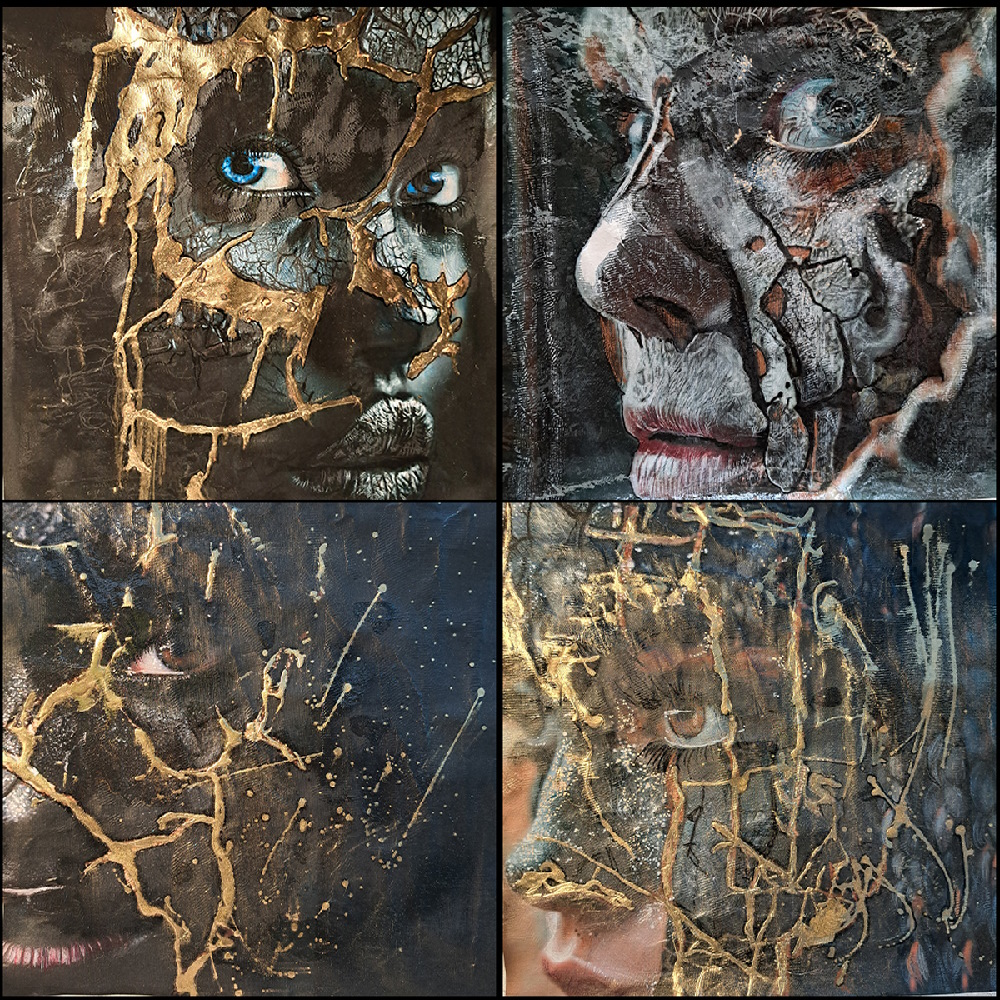
The cracks within the textures on the figures are connected with a material that looks like gold. This could be referencing kintsugi, in which one would repair a broken ceramic object with gold to highlight the imperfections of said work and the beauty of the imperfections. Therefore, we could interpret this as a message of resilience within the figures, as despite cracks and fractures- there is beauty within the flaws of humanity.
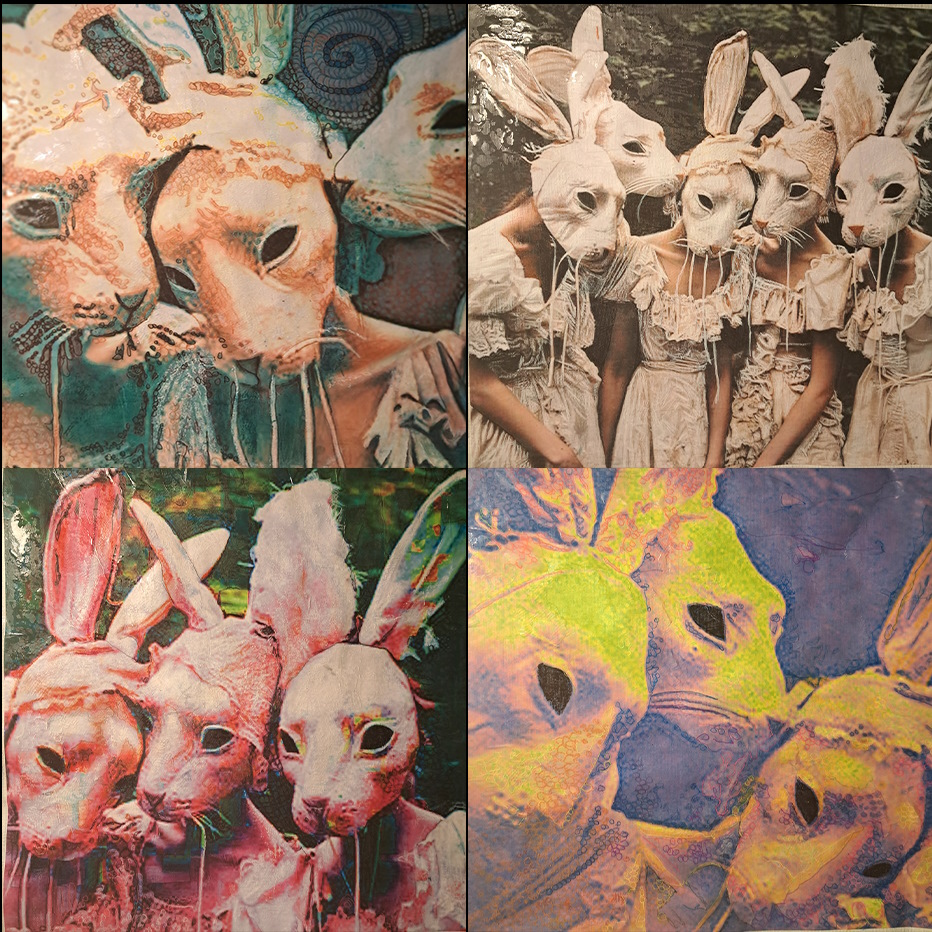
t2 (2024) features figures wearing rabbit masks, which are set into three sections (the top left, bottom left, and bottom right), which are zoomed-in areas of the top right section. The three sections have been changed and are much more saturated, which contrasts heavily with the original image. The saturation of these sections creates a slightly haunting feel to them.
The textures of the sections (which result in quite a grainy composition) give the work a more dated analogue photographic aesthetic. They also give the work a cinematic touch, which helps to bring the composition alive. The backgrounds of these sections are muted, which allows the figures to take prominence within the scene—directly guiding the viewer towards them without distraction.
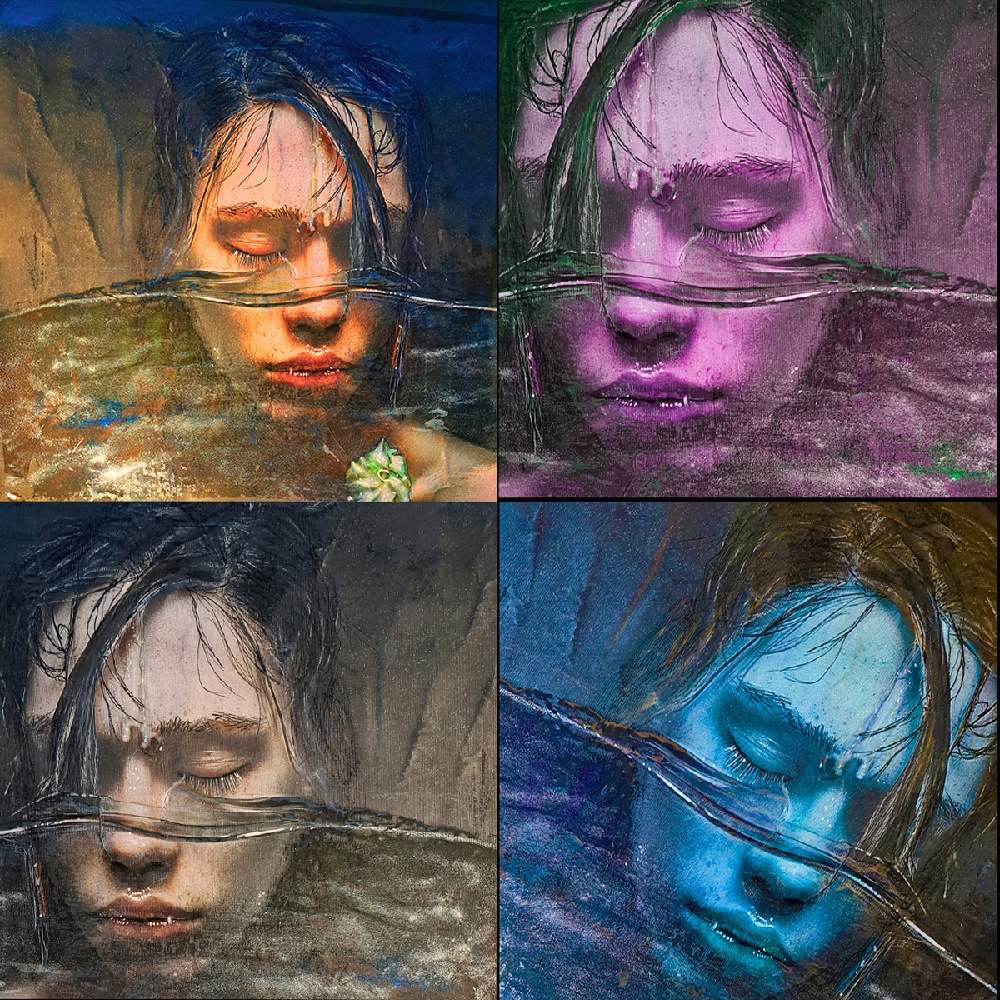
t3 (2024) features a figure submerged in water. The colours within each section complement each other and guide the viewer around the four images. Upon much closer examination, the painting’s textures are much more visible, which helps to add more glistening to the water and make the image feel as though it is submerged itself. The colder colours (apart from the top left) make the work seem as though it could be a memory or a fragmented memory being pieced together.
Despite these colder colours – submerging the figure in the water allows the figure to explore its mind. This lends to the work, giving a quite meditative feel to it; the figure looks peaceful, and thus, we may understand that the reflections of the water could point to the reflection the figure is going through. This meditative element of the piece allows the viewer who observes this action to reflect upon themselves and engage emotionally with the piece.
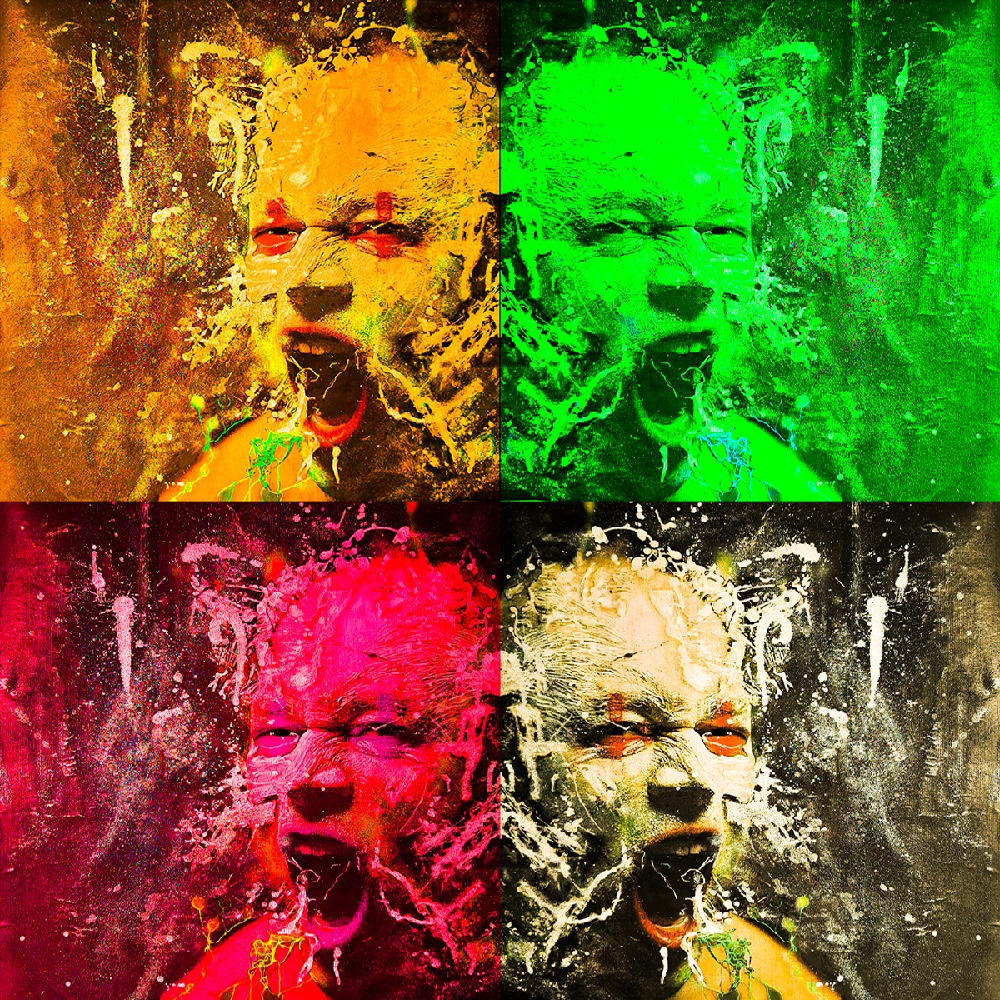
t3 (2024) [the one on the right side of the publication] uses much bolder colours and saturations than the previous compositions reviewed. The colour against the chaotic scene and the figure’s facial expression seem, perhaps, angered or frustrated. This is a break from the calmer scenes from the previous works, showcasing Riedel’s versatility when showcasing various human emotions through expressions and the scenes themselves.
Throughout the four sections of the artwork, the textures are exploding aggressively through the image, as there seem to be splashes of paint that have a misty texture. This makes it as though we may be seeing the figure through glass – or perhaps the splashes could be a visualisation of the anger or frustration that the figure is expressing. The orange, green, red, and neutral (which grounds the three other sections) expouse intense aggression toward what the subject is directing towards. These colours, together with the paint splashes, thus have created a very chaotic composition, successfully creating tension.
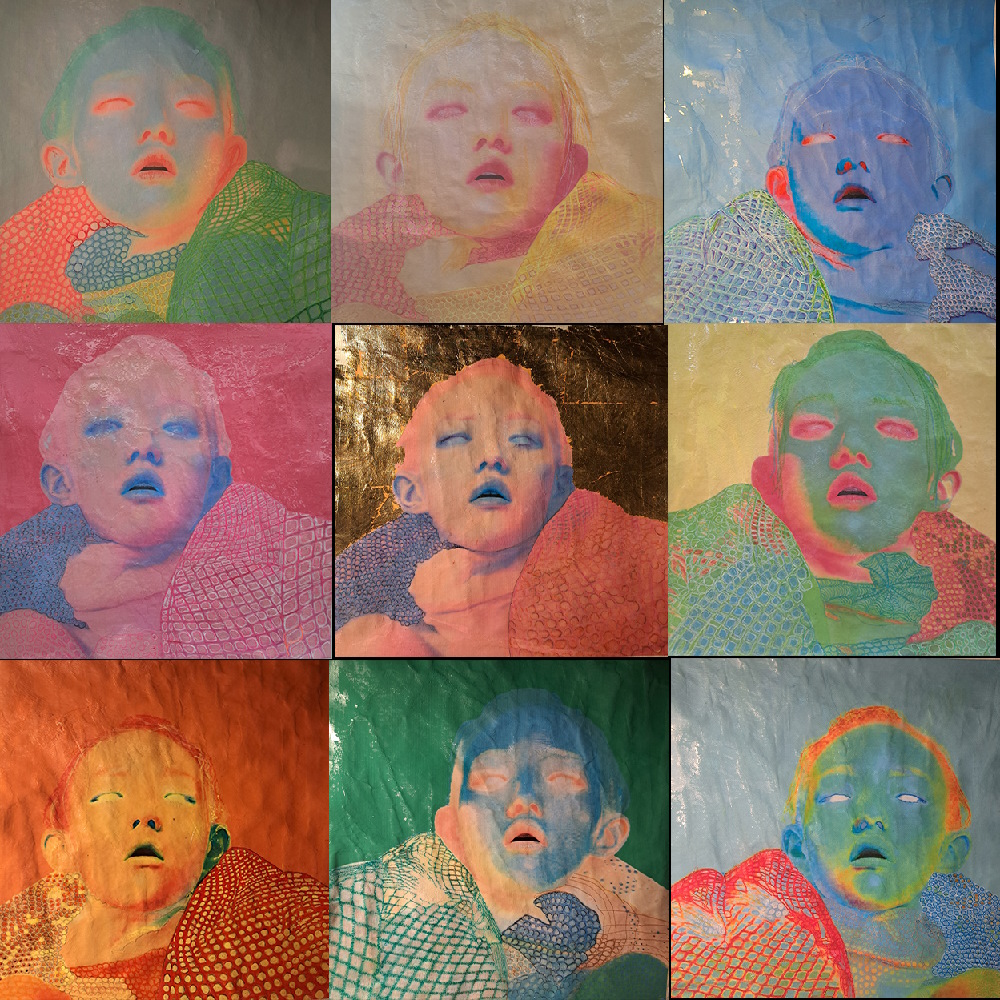
t4 (2024) is unlike the previous works- it uses nine sections rather than four. The composition is entirely of a negative version of the original image- yet the original image is nowhere in the composition. This mosaic of the same child in different negatives could represent the psychology of childhood – in which each negative may form a different emotion or personality. The extreme contrast of each part of the composition against the more subdued middle segment- allows the viewer to look at each section before moving towards the middle of the work.
One example of being able to guide the viewer around the work is taking the viewer to the top middle part of the composition, which is both gold and orange and is less harsh with its contrast. This helps to give a warm feel, while the subdued colour scheme of this section gives it a slightly nostalgic feel and positive vibe. Below this part – in the middle of the composition; it is much more muted and monochromatic, which may suggest a quiet state and softer personality. To the left of this section, you have a much more pink and blue section. These two colours contrast each other widely and thus create a slightly chaotic feel to this section.
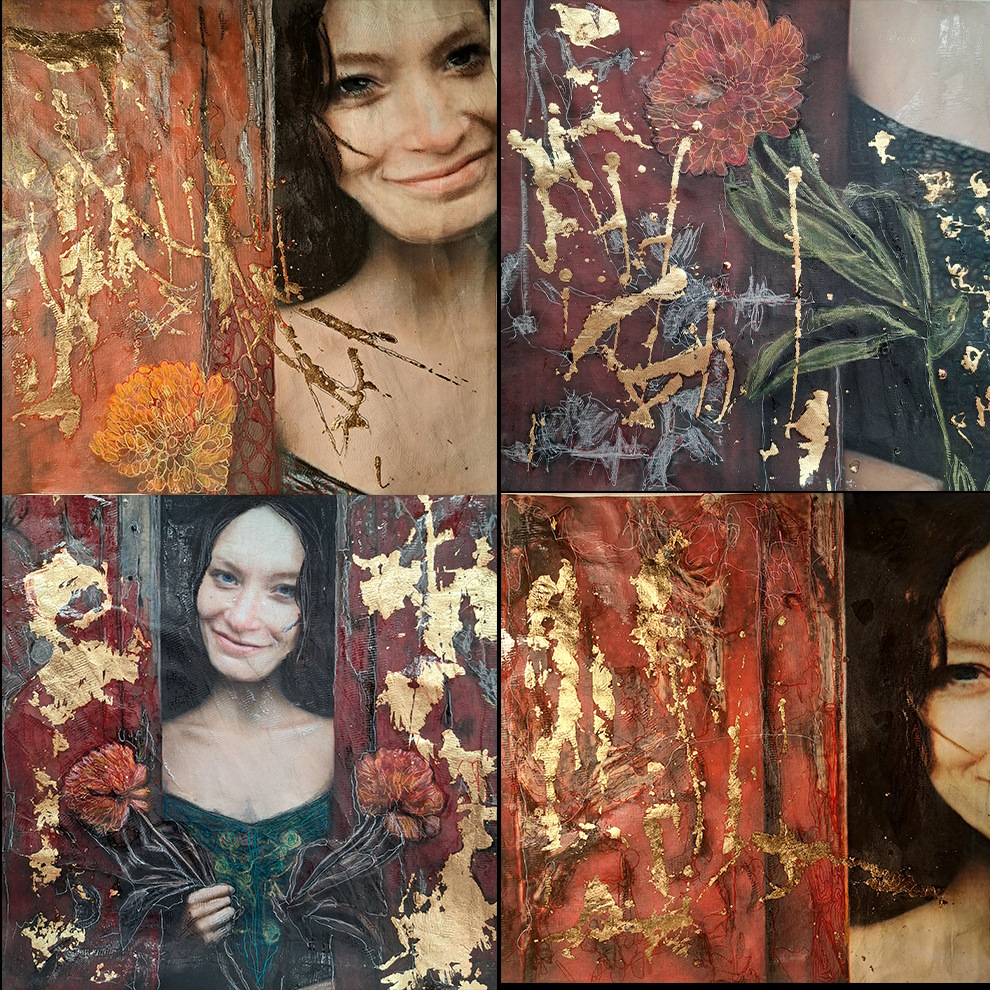
t5 (2024) features a female figure between two sections of wood with paint peeling from it, suggesting it is weathered. The female figure is holding two flowers – one in each hand- while looking at the viewer of the work. To the sides, gold paint is splashed onto the wooden section of the work, which contrasts with the dark red. This contrast also puts more prominence on the female figure in the centre, guiding the viewer towards the figure.
The weathering of the wood and the more blackened parts of the flowers in the bottom left panel could represent mourning or a potentially darker theme, as the flowers look as though they could be chrysanthemums. These flowers often represent mourning, so including them could present the scene as a story that allows the viewer to wonder. The female figure is also smiling towards the viewer and seems aware of being within the work itself. This self-awareness thus helps to give life to the composition.
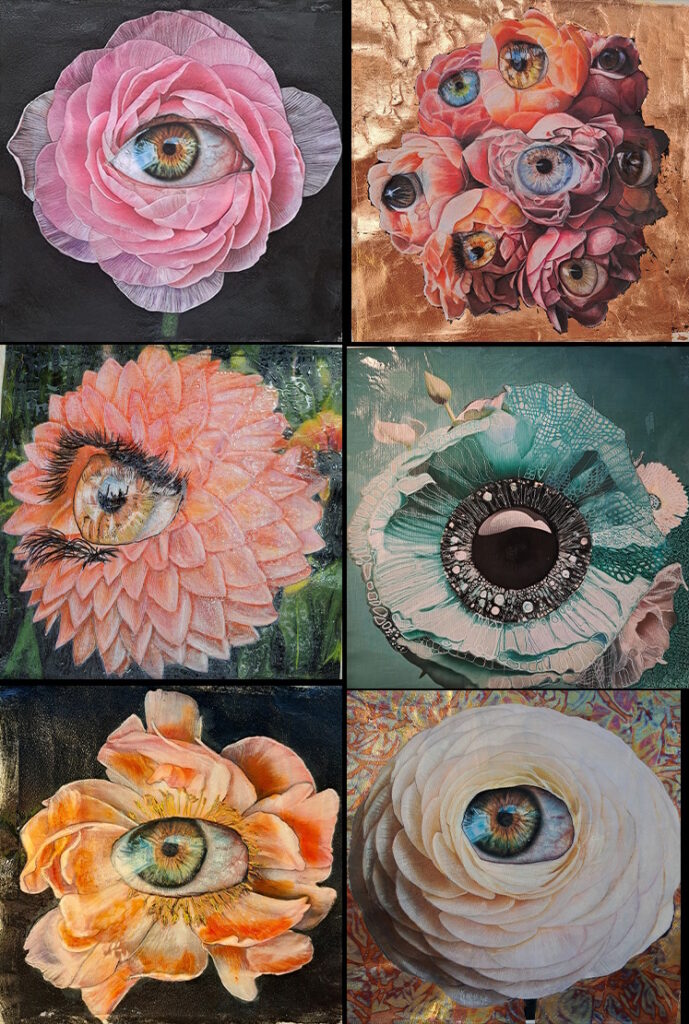
t7 (2024) features different flowers which have eyes implanted within them. Thus, it takes a much more surreal twist while giving it a slightly uneasy feel as the flowers now look towards the viewer. The eyes have now turned the flowers from being observed into observers- these eyes give them awareness and help transform them into much more sentient beings. As the composition is split into six sections, all sections are now observant of the viewer. It is slightly haunting as it feels as though it is watching us.
Perhaps it could be a way of making it more human that these flowers are now interacting with their audience (or maybe we are now the audience of this new sentience?). The flower’s eyes look as though they are following the viewer’s movements and contrasts extremely well with the more natural beauty of the flowers. They turn the flowers into something that is no longer just a still life but an active composition participant.
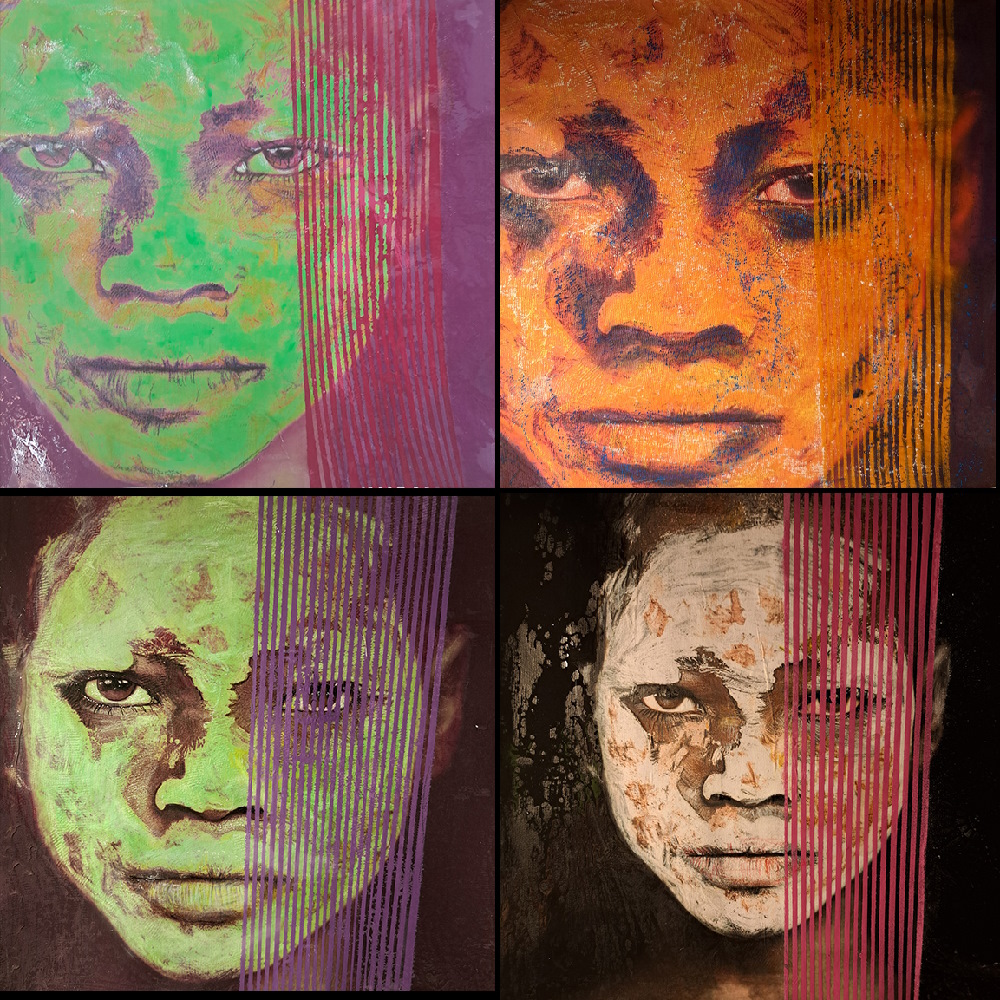
t6 (2024) divides the face into two halves; one side is covered by thin repeating lines which slightly hide the face, and the other is uncovered. The face is textured and looks as though it has paint peeling from it. The paint goes from smooth to crumbly and rugged, which could represent the fragility of our existence. The thin vertical lines covering half of the faces disrupt our perception of the figure, suggesting that there is more to just fragility within human existence that hides itself from being seen.
The composition’s top half is much more saturated and thus contrasts with the muted (and more textured) bottom half. The more saturated regions of the two top sections give more attention to the darker sections of the face that are not as saturated. This allows the viewer to examine the depressions in the face and potentially showcase the experiences this figure has gone through. This helps to challenge the viewer to question what experience and story each version of the same face shows and, by this questioning, their own as well.
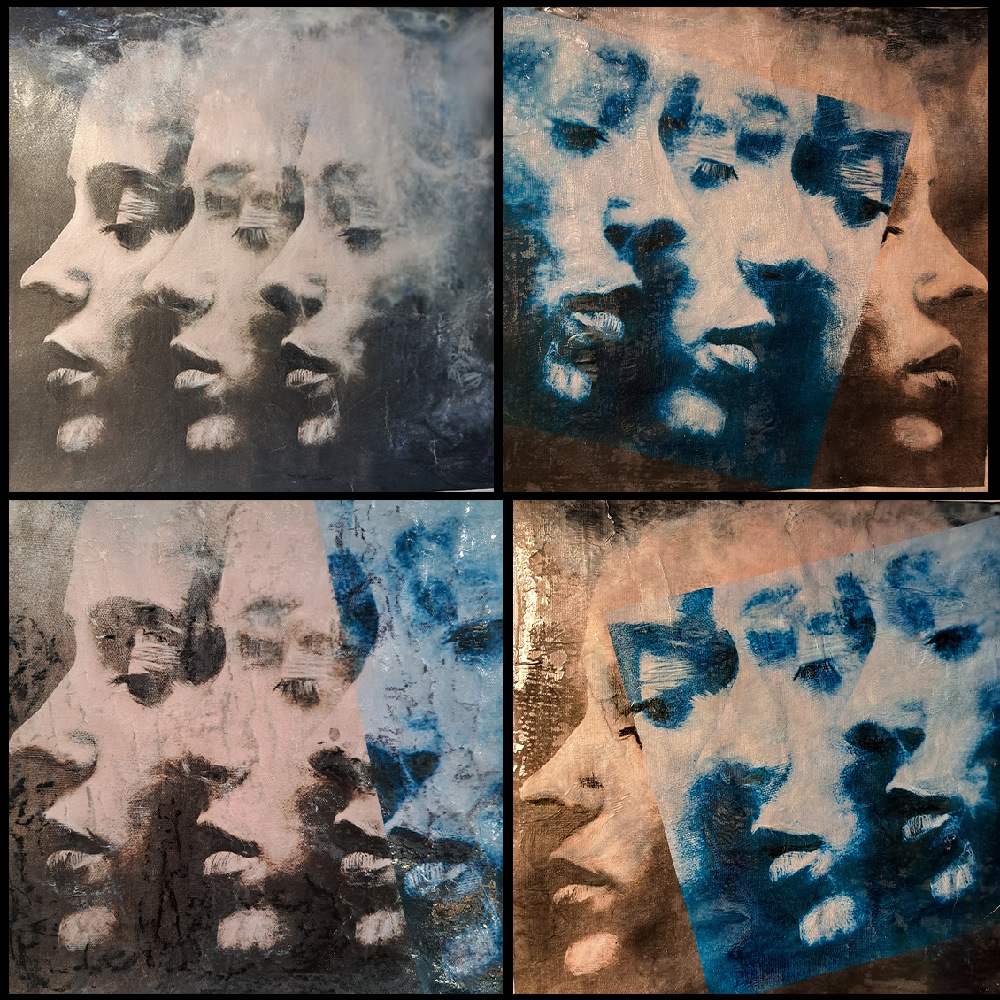
t9 (2024) is a monochromatic composition which casts a blue version of the composition against each segment of the piece. In the top left- the blue merges into the image, while in the other three sections, it is as though it is placed above the image. The faces look like they are dissolving into the background as it gets slightly misty near the top and the right of the images. This gives the artwork a dreamy look, as though the figures are replicating themselves- disrupted by the sudden insert of the blue version.
The figures appear to be ghosts, and the composition feels like it’s fading, giving it an ethereal appearance. Along with the blue figures overlapping the original- both the original and the blue are dark and monochromatic, which could suggest an existentialistic touch to the work. The features also don’t have any expressionistic facial features or emotion, which furthers this interpretation that they are ghostly figures. The repetition of these figures makes it as though they are disappearing into the mist, which could imply that they are fading from memory.
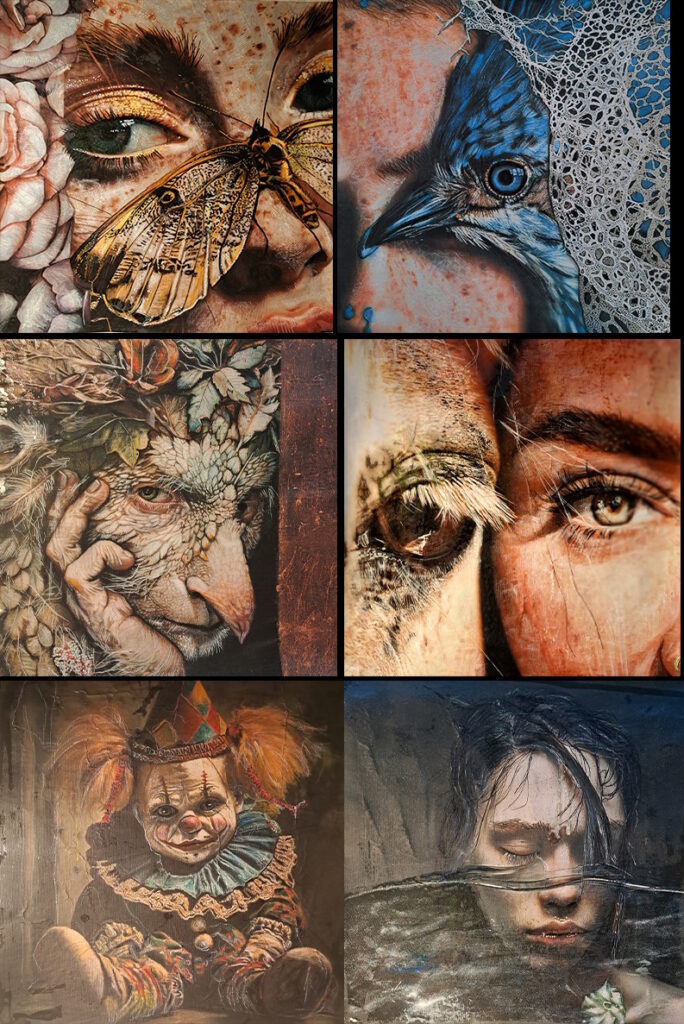
t8 (2024) is a composition made up of six different scenes, of which one we have seen before in t3 (2024). Each section invites the viewer into a space where the human figure interacts with organic and inorganic matter (animals, insects and water). The scenes look as though they could be a part of a dream that is loosely connected to each other, creating a surrealistic experience for the viewer. The top left section of the composition has a butterfly meet with a human’s eye (though one of the eyes seems to be pitch black- on the right), while behind the human figure, there are flower petals – merging the figure with the natural world.
To the top right of the composition – a bird replaces the gaze of the human figure. The middle left goes further with its pairing of nature and humanity- in which it has merged the figure with a bird as the human has feathers and leaves growing out of them. To the right of this, a human eye and the eye of an animal are pits against each other, which seems like a comparison between humanity and nature- suggesting we are the same as we are both sentient. The bottom left of the composition has a clown, making this section feel like it’s an analogue and aged photograph. The clown looks menacing, and the artwork looks as though it’s haunting. To the right of this section- is the artwork we reviewed earlier, which, in this context, may allow for this dreaming to end as the viewer leaves the water and wakes up.
